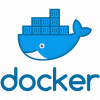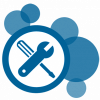Related Content
 |
Making Continuous Integration Work for You Many developers learn about using continuous integration to improve their deliverability speed and decrease the amount of effort needed to launch new features. Actually practicing continuous integration, however, is nowhere near as straightforward as it sounds. Here's how to get started in making CI work for you. |
|
 |
You Can’t Rush Agile Change Too often, organizations try to rush agile change. It is usually because they want to see the business benefits of agile as quickly as possible. Unfortunately, change doesn’t work like that—you can’t rush it. In fact, trying to change too fast often results in no change at all. Here are some examples to avoid. |
|
 |
How Testers Can Use Docker to Shift Left and Automate Deployments Docker has several advantages over virtual machines: It’s easier to deal with, starts up faster, and requires fewer resources. Using Docker also can give testers more confidence in their releases. Developers use the same environment that will be used in production, which streamlines code delivery and shifts QA left. |
|
 |
Lessons Learned in Testing a UI Test Automation Tool How do you test a tool to be used for automated testing? If a tool executes an automated test that generates keyboard and mouse events to replay user actions, can the test emulate user input and control another instance of the tool to automatically record and play another test? Here's how you test the test tool. |
|
 |
16 Questions to Assess Your Response to Major Change If your responsibilities include guiding others through major change, you might find it instructive to assess your own behaviors and response to change. The sixteen questions here can help you do just that. You can also use these questions to facilitate a discussion with your team about a current or upcoming change. |
|
|
|
A Checklist for Managing Go-Live Decisions and Risks If you have to replace a complex existing data system in production, decisions about when and whether to go live should be treated with gravity and care. One process that can help keep you honest is developing checklists that describe very clearly what is expected to be accomplished and verified at each milestone. |
|
 |
Building a Culture of Continuous Improvement A culture of continuous improvement means you are open to improving how you build and deliver. You don't accept the status quo; you choose how to work and feel empowered to change it if it no longer makes sense. Kevin Goldsmith gives some ideas for frameworks to adopt in order to move toward this people-first culture. |
|
 |
The Cross-Browser Testing Landscape Is Ready for DevOps While most websites today are responsive, there is a significant growth in progressive web apps that provide cross-platform mobile and web capabilities from within a web app. Add to this maturing practices around agile development and testing and greater adoption of BDD practices, and the landscape is ready for DevOps. |








